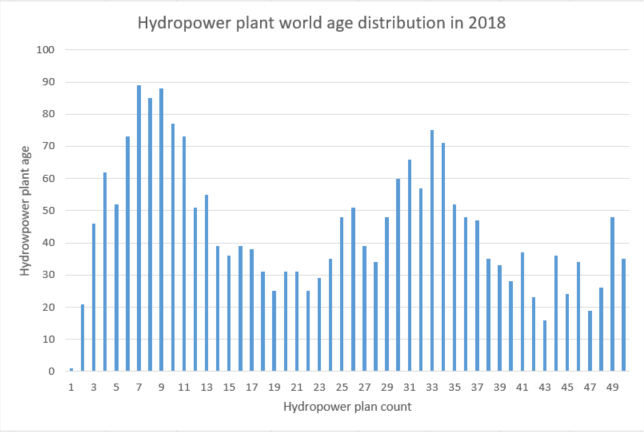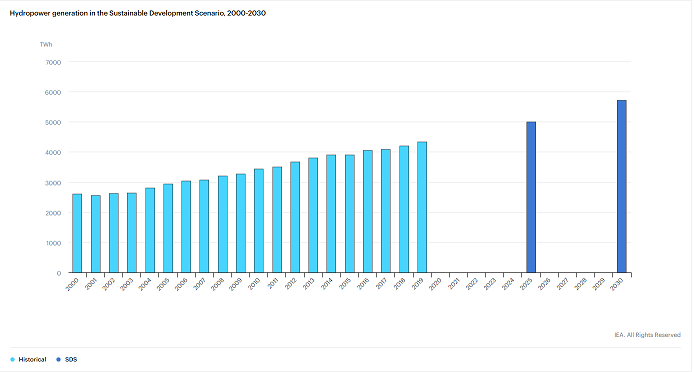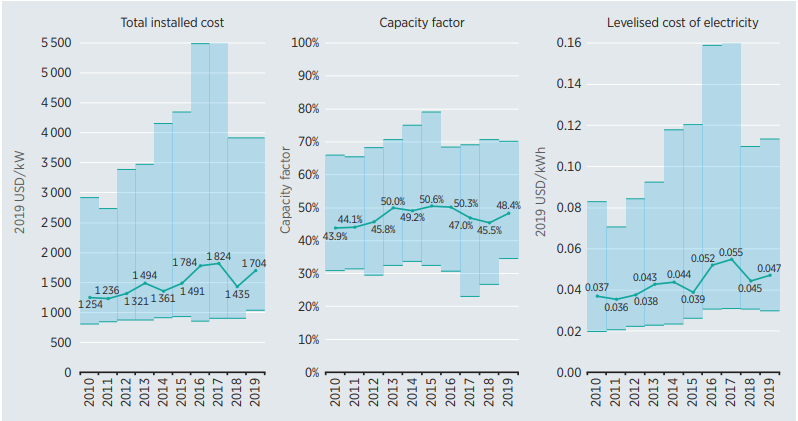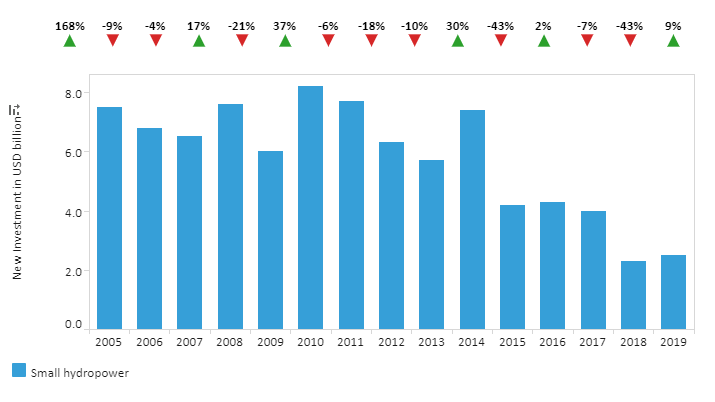Hydropower
Definition^1:
Hydroelectric power or hydropower is the electricity created when energy is captured from flowing water. Using a dam or diversion structure to alter the natural flow of a river or other body of water, hydropower technologies convert the water's motion into electricity. Since hydropower costs less than most other energy sources, it is widely used across the United States.
Because water evaporates into clouds and recycles back to Earth as precipitation, water power is able to produce electricity in a sustainable way. Hydropower is also becoming even more environmentally friendly as researchers work on new technologies to reduce adverse impacts on fish and their natural habitats.
Hydropower is mainly associated with the Hoover Dam a huge facility harnessing the power of an entire river behind its walls but hydropower facilities come in all sizes. Some may be very large, but they can be tiny too, taking advantage of water flows in municipal water facilities or irrigation ditches. They can even be dam-less, with diversions or run-of-river facilities that channel part of a stream through a powerhouse before the water rejoins the main river. Whatever the method, hydroelectric power is quite easier to obtain ^2.
Data
Most of the data used for this model is extracted from International Energy Agency (IEA)^4 and International Renewable Energy Agency (IRENA)^5.
Data's about Hydropower plant commissioning year has been extracted from a power plant database ^6 to determine the age of global hydropower plant stock.

Some insight on hydropower evolution
IEA hydropower generation in the Sustainable Development Scenario, 2000-2030 [^7]

Global weighted average total installed costs, capacity factors and LCOE for hydropower, 2010-2019 [^8]

i.e. The maximum possible energy output of a given installation assumes its continuous operation at full nameplate capacity over the relevant period. The actual energy output during that period and the capacity factor vary greatly depending on a range of factors, for hydropower energy factors can be seasons and weather conditions related to water availability and electricity demand of course. The $capacity factor$ defined as "the ratio of the net electricity generated, for the time considered, to the energy that could have been generated at continuous full-power operation during the same period ^3".
Global Trends in hydropower Energy Investment (small plant less than 10 MW) [^9]

^1: Hydropower Technology Basics. NREL.gov ^2: Capacity factor. NRC.gov ^3: Types of Hydropower Plants ^4: IEA 2022, World Energy Outlook 2019, IEA, Paris, License: CC BY 4.0.
^6: Global power plant database 2018 [^7]: IEA 2022, Hydropower generation in the Sustainable Development Scenario, 2000-2030, IEA, Paris, License: CC BY 4.0. [^8]: Power generation cost 2019 [^9]: Global Trends in renewable Energy Investment